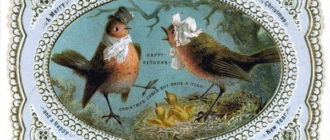The Chocolate Girl, also known as The Beautiful Chocolate Girl, is an iconic painting by the French portrait painter Jean-Étienne Liotard, which immediately after its creation acquired the status of a masterpiece. Before us is a young waitress in a starched snow-white apron – the embodiment of health and youth. She holds a tray with a dainty cup filled to the brim with hot chocolate. It is curious that the cup is made of Meissen porcelain: its production began in Europe shortly before the writing of “Chocolate Girl”. The gentle, calm, somewhat melancholic face of the beauty is covered with a slight blush. The master successfully selected the colors for her costume: a golden-ocher bodice with a peplum, a gray skirt and a silky pink cap with lace give rise to a feeling of freshness, comfort, and tranquility.
Author: Jean-Etienne Lyotard (1702-1789).
Year of writing: 1743-45
Size: 82.5 x 52.5 cm.
Rococo.
Genre: Portrait. Household scene.
Technique: Pastel.
Material: Parchment.
Location: Gallery of Old Masters, Dresden.
The identity of the young lady who posed for the painter has not been precisely established. It is believed that Lyotard’s model was the representative of an impoverished noble family, Anna Baltauf. The maiden’s noble origin is indicated by her impeccable posture, sleek hands and skin that clearly did not know the sun. Legend has it: once the Austrian prince von Dietrichstein dropped into a metropolitan cafe, wanting to taste a chocolate drink.

Painting Chocolate Girl by Jean-Etienne Lyotard – a portrait of Cinderella from a Viennese coffee house
The beauty of the young servant conquered the aristocrat and, despite the dissatisfaction of his relatives, he was married to her. High society was shocked by his act. Before the wedding, the groom ordered a full-length portrait of a lady of the heart from a fashionable artist. This very romantic version, repeating the plot of the famous fairy tale, was described in booklets with recipes from the American company Walter Baker & Company.
The artistic merits of “Shokoladnitsa” are truly unique, this work of art literally mesmerizes with its perfection. According to visitors to the Dresden Museum, the painting attracts like a magnet. Everything is harmonious in it: halftones with imperceptible transitions of light, composition, proportions, smoothed manner of writing. The master masterfully conveyed the smallest features of the heroine’s outfit: it seems that we are about to hear the rustle of a fluffy skirt and the sound of small heels. The dishes are also painted with extraordinary care. A crystal clear glass of water can be looked at for hours: glare, refraction of objects, reflections in the glass form a miniature “picture in a picture”.

In 1745, the drawing was bought by the Italian art connoisseur Francesco Algarotti for King Augustus III of Saxon. The new owner was delighted: he even called Lyotard “Holbein pastels”.
The painting “Shokoladnitsa” brought resounding fame to its creator and won the sincere love of the public. The Meissen manufactory began to produce porcelain figurines of a pretty girl. They are still popular today: statuettes from the beginning of the twentieth century go from auctions for 2,000 or more euros.







